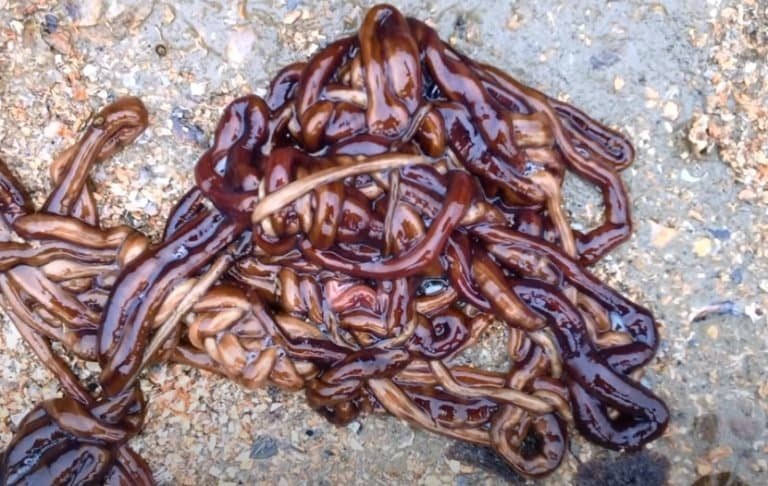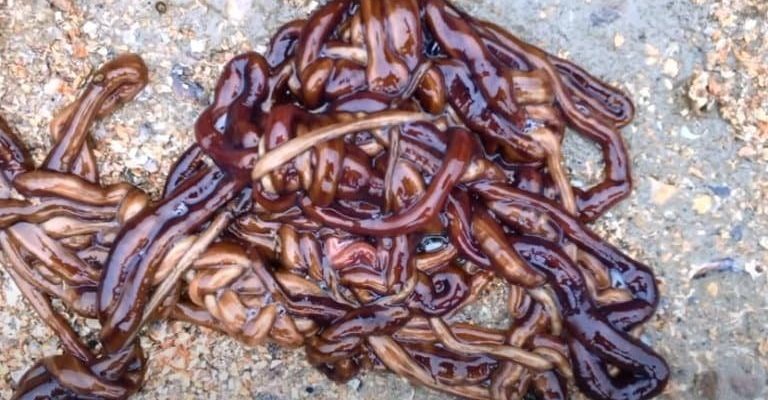
In this guide, we’ll dive deep into understanding bootlace worms—what they are, where to find them, and some cool facts that might just surprise you. From their physical characteristics to their habitat, we’ll give you a comprehensive look at these wondrous worms, making sure to keep it light and engaging. So, grab your coffee, and let’s jump into this slimy yet enthralling adventure!
What Are Bootlace Worms?
Bootlace worms, scientifically known as *Lineus longissimus*, are a type of marine ribbon worm that you might encounter in the waters along the coasts of Northern Europe. They are not your typical earthworms; in fact, they belong to a group called nemerteans, which are known for their unique structure and characteristics. These worms can grow to breathtaking lengths, sometimes reaching over 30 meters! That’s like a black mamba on a really, really good day.
One of the most striking features of bootlace worms is their elongated, flat bodies. They can come in various colors—ranging from the deep reds and browns you might expect to brighter shades of yellow and green. Here’s the thing: while they may look harmless, bootlace worms are hunters. They have a special appendage called a proboscis, which they use to catch prey. Think of it as a very advanced fishing rod, ready to reel in anything unfortunate enough to swim by.
Where to Find Bootlace Worms
You’re probably wondering, “Where can I actually spot these intriguing creatures?” Bootlace worms thrive in shallow coastal waters, often hiding among seaweed beds and rocky substrates. If you’re wandering along the beaches of Scotland, Norway, or Denmark, keep an eye out when the tide goes out. You might just stumble upon one curled up in the shallows.
They prefer sandy or muddy bottoms because these environments offer plenty of food and hiding spots. Bootlace worms primarily feed on small invertebrates, and they often bury themselves in the substrate to ambush their prey. Imagine a long, colorful ribbon lying in wait—just waiting to snatch up a passing shrimp or worm!
The Life Cycle of Bootlace Worms
Bootlace worms have a unique and fascinating life cycle. Like most marine worms, they start their journey as tiny eggs. The female bootlace can produce thousands of eggs, which hatch into larvae called pilidium. These larvae are free-swimming and have a distinct appearance, looking like little jellyfish as they drift in the ocean currents.
As they mature, they undergo a metamorphosis, developing into the recognizable long body we associate with bootlace worms. Interestingly, their growth can be quite rapid when conditions are right. You might be surprised to learn that under optimal conditions, they can grow several centimeters a day!
Once they reach maturity, bootlace worms continue their life in the ocean, sometimes living for several years. However, their lifespan can vary based on environmental factors and the availability of food.
Unique Adaptations
Bootlace worms are pretty amazing when it comes to adaptations. One standout feature is their proboscis, which can shoot out to capture prey at lightning speed. It’s like a miniature version of a chameleon’s tongue but way more impressive, given its length and versatility.
Another fascinating adaptation is their ability to regenerate. If a bootlace worm loses part of its body, it can regrow it! This ability makes them resilient in the wild. So, if they face a predator, they have a fighting chance of making it out alive, even if they lose a piece of themselves in the process. It’s like having a safety net in a world full of dangers.
Threats and Conservation
Despite their resilience, bootlace worms do face threats in their environment. Pollution, climate change, and habitat destruction can affect their populations. Coastal development often disrupts their natural habitats, making it harder for them to thrive.
Conservation efforts are essential to ensure these beauties continue to grace our oceans. Simple actions like reducing plastic use and supporting clean ocean initiatives can make a significant difference. By taking care of our environment, we help protect these unique marine creatures and their ecosystems.
Fun Facts About Bootlace Worms
Want to impress your friends with some fun trivia? Here are some cool facts about bootlace worms:
- They have an incredibly long body—some have been recorded at over 30 meters long!
- Bootlace worms can regenerate lost body parts, making them one of nature’s remarkable survivors.
- In certain areas, they play a vital role in the marine food web, acting as both predators and prey.
- Despite their size, they are mostly harmless to humans and primarily hunt small marine invertebrates.
Exploring Bootlace Worms
If you’re excited to see bootlace worms in their natural habitat, consider joining a guided marine life tour. Many coastal regions offer educational trips where enthusiasts can witness marine life up close. It’s a fantastic way to learn more about these creatures while helping contribute to their conservation.
You might also consider volunteering with marine conservation groups or participating in beach clean-ups. Not only do you get to enjoy the great outdoors, but you’re also doing your part to protect the environment for these amazing creatures.
Bootlace worms are a captivating example of nature’s diversity. From their impressive lengths and remarkable adaptations to their vital role in coastal ecosystems, these creatures are worth knowing about. As we explore and learn about them, we take important steps in appreciating and protecting our oceans. So next time you’re near the coasts of Northern Europe, keep your eyes peeled for these incredible worms. Who knows what fascinating discoveries you might make!

